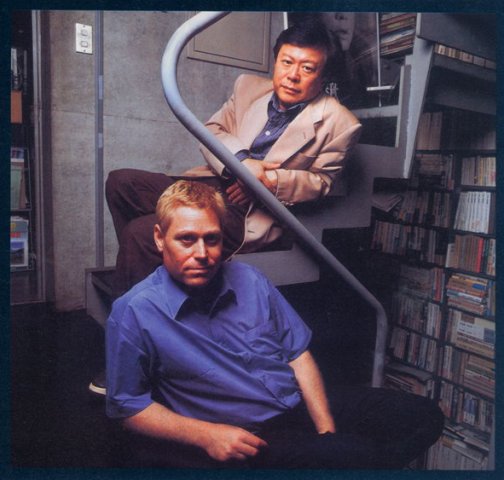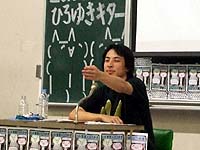The Nikkei yesterday printed a brief article on its front page praising the JET Program, a scheme by the Japanese government that exists primarily to place native English teachers in Japanese classrooms, for almost 20 years of “truly significant benefiting Japan”. An excerpt:
Saturday, November 11, 2006
CHRONICLES: JET Program Marks Two Decades Of Benefiting Japan
This year, 5,508 young people from 44 countries, including the U.K. and U.S., are teaching foreign languages — primarily English — at schools throughout Japan.
Almost 20 years have passed since the program was created. Ceremonies to mark the anniversary are planned for the near future, so let us consider what this program has accomplished.
English language abilities among high school students have perhaps risen a little, but the truly significant fact is that about 50,000 young people from around the world who have participated in the program have returned to their home countries after getting to know Japan. Many of the JET alumni have gone on to play important roles in relations with Japan.
The forerunner to the JET program was the BET (British Exchange Teaching) program, and the record shows that the current program exists in part because of the efforts of former Prime Minister Junichiro Koizumi, then a member of the House of Representatives. Koizumi had studied in Great Britain, albeit for only a short time.
The JET Program started back when the idea that putting a foreigner in the classroom would work wonders for English education was just gaining steam. But as I have noted, the number of JET participants has declined in recent years, in part because English-teaching industry has matured since then. Nowadays, English conversation schools can be found almost everywhere in Japan, and a school that wants to hire a foreigner can hire one more quickly and easily through private placement agencies or by advertising directly to the large pool of teachers already in Japan. The Wikipedia entry for the program notes that several prefectures have opted out of the JET Program in recent years. So is it time to follow the Koizumi model of “letting the private sector do what it can” and leave the hiring of English teachers up to market forces?
Not yet, I say, and I think the Japanese government would agree with me. The Nikkei gives one very compelling reason why this program, and its $400 million annual budget, remains important: the JET Program is a veritable factory for “Japan handlers” who will go on to careers dealing with Japan in their home countries. It is well-known that the Japanese government has made a point of cultivating Western “Japan experts” since before WW2 in order to boost its international image, and the JET Program has simply proved an especially efficient example of that practice, along with other programs aimed at boosting international exchanges to Japan that began in the 1980s. By hobbling young college graduates early on with 3 years of meaningless semi-teaching, the government can steer them in the direction of a lifelong involvement with Japan, with a small percentage going on to success in various fields. Accordingly, Japanese companies and Japan-related institutions instantly recognize JET experience as synonymous with a familiarity with Japan and tolerance for the Japanese office culture, and often (but not necessarily) Japanese language skills.
And the results are clearly visible. Many if not most of the foreign staff I’ve encountered at Japanese or Japan-related organizations have been JET alumni. More importantly, a good deal of US government employees who deal with Japan (at Department of Commerce, etc) spent time in JET, as have Japan-related employees of other governments, I’m sure.
Now, it’s also true that many of the Japan watchers and others who may go on to “play important roles in relations with Japan” have spent time in the country as privately funded language teachers, exchange students, or even Diet members’ assistants (in the case of Mike Green, Washington’s Japan hand-in-chief). But the fact of the matter is foreign workers are far more likely to enjoy their time in Nowheresville, Japan, if they are able to enjoy the pampering offered by the Japanese government – in addition to a comfortable salary, housing, transportation, and other benefits come standard. Wouldn’t you be happy with the country that let you save enough to pay off your student loans while giving you a cakewalk job?

 On Nov 20, I’m going to see a lecture by Alex Kerr (pictured, bottom), a businessman in Japan and Thailand and author of
On Nov 20, I’m going to see a lecture by Alex Kerr (pictured, bottom), a businessman in Japan and Thailand and author of  “I went back to my parents’ house after my home address was revealed on the Internet, but harassing phone calls kept coming into my office. Even my customers started to distrust me, thinking that I had someone (harassing me).”
“I went back to my parents’ house after my home address was revealed on the Internet, but harassing phone calls kept coming into my office. Even my customers started to distrust me, thinking that I had someone (harassing me).”